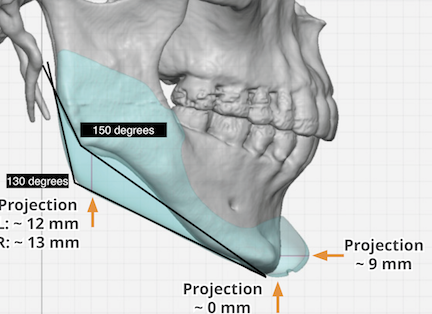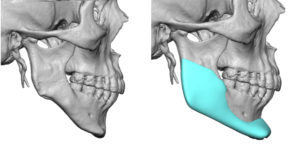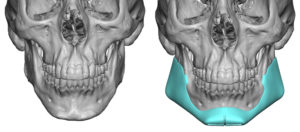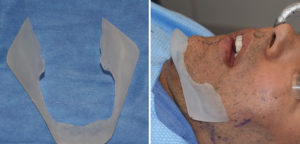Background: In the male a strong jawline is a desired facial feature. There are no really defective ways to create a strong jawline other than by surgery. This is particularly true in the male who has a naturally weak or underdeveloped lower jaw. Interestingly jaw muscle exercises have been touted as a method to increase the width of the lower jaw over the posterior angles where the masseter muscles exist. However, while the effectiveness of these exercises can be debated, suffice it to say it would be limited and uncertain as to their long-term maintenance of the muscle hypertrophy.
One of the more common aesthetic lower jaw deformities is that of the high mandibular plane angle jaw shape. This is where the lower jaw is rotated up and backwards, creating a high posterior jaw angle and a short recessive chin. In essence, the L shape of the lower jaw is altered to a decreased horizontal position. Correction of the high mandibular plane angle patient requires derotation of the L shape, vertically lengthening the jaw angles and bringing the chin forward.
How much vertical lengthening of the jaw that is needed requires assessment of the gonial angle that exists compared to the type of angle the patient wants. As a general rule, a gonial angle that exceeds 140° would be considered aesthetically deficient while a gonial angle less than 110° would be considered aesthetically too prominent. Within the wide range of 110 to 140° for the gonial angle leaves a lot of room for patient preference. Choosing the best gonial angle for any particular patient must factor in other facial features as well. There is no perfect gonial angle that would apply to all patients.
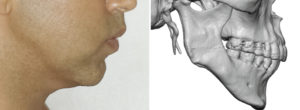
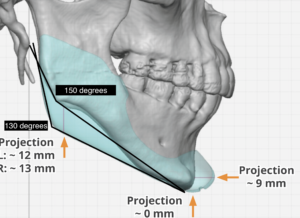


Highlights:
- Custom jawline implant designs in the high gonial angle patient require vertical jaw angle lengthening.
- The amount of vertical jaw angle lengthening vs the risk of masseteric muscle dehiscence must be carefully considered.
- The change in the gonial angle compared to the vertical angle lengthening is roughly 2 degree per every 1mm of vertical length. (2:1)
- Derotating the high mandibular angle patient must also consider whether the vertical length of the chin needs also to be shortened.
Dr. Barry Eppley
Indianapolis, Indiana

